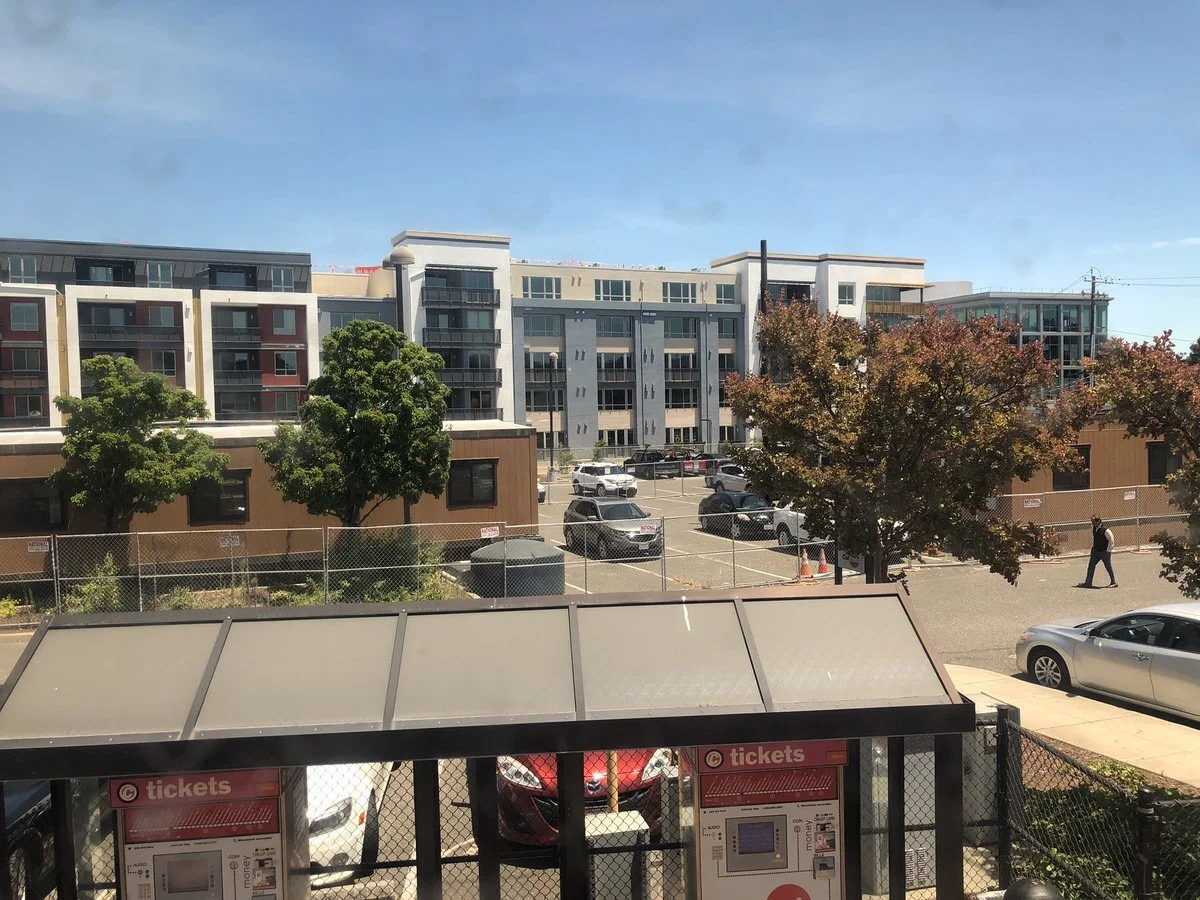The Airport Lounge School of Economics
I recently participated in an affordable housing conference in Orange County. I’ll write on the specifics of the event in a future post. But as is typical I learned more outside the university environment than at the event itself. There’s always a gap between professional statistical analysis and external reality. Humans are odd creatures that simply fail to behave as predicted in PowerPoint presentations.
Redding to Orange County (Source: Google Maps)
My flight back home to San Francisco was delayed by a few hours due to poor weather. A storm in one part of the country often results in planes and airline workers being in the wrong places at the wrong time so delays ripple out across the system. So I fell in to a lengthy conversation with the woman sitting next to me at the departure lounge. Like so many other families she and her husband had experienced unemployment and foreclosure during the 2008 financial crisis. Now that they were coming up on the seven year anniversary of their troubles their credit was about to reset and they would be eligible for a mortgage once again. She was busy exploring potential properties on her cell phone and I asked her about her options.
She currently rents a home in Redding 600 miles north of Orange County where property is significantly less expensive. The median home value in Redding is about $260,000. In Orange County homes are more likely to cost $700,000. She’s renting a three bedroom home for under $1,000 a month in Redding. In Orange County a similar property would likely be nearly three times as expensive and well outside her budget. So she’s been commuting by air to Orange County Monday to Friday each week. As a traveling nurse her present company pays for her transportation so she’s exploiting the arbitrage between work in one location and lower housing costs in another. She eats and sleeps at the same medical facilities where she works.
Traditionally traveling nurses were hired to fill temporary positions. These days employers are reluctant to take on full time permanent workers along with all the long term obligations that come with them such as health insurance, pensions, and the less obvious expenses associated with accommodating permanent staff. Whenever possible employers opt for outsourced contract workers. Evidently flying people in four times a month via an external intermediary is more cost effective than simply hiring full time local people.
She’s actually been rotating between the same few physical places all owned by the same parent company for the last several years. But on paper she and many of her co-workers are technically classified as temps by various methods. It’s all about shifting structural burdens to other entities. The hourly wage is much less at issue. In essence, third party agencies and airlines are being paid rather than simply providing stable benefits to workers. It’s an elaborate shell game.
As I was sorting out these complex overlapping situations I recalled my last encounter at this same airport. When I landed in Santa Ana the terminal was lightly populated and I chatted with the waitress who served me lunch. She was a charming blond woman who was born and raised in Orange County. I asked her how she manage to live in such an expensive place. She said she and her husband along with their three kids lived in a five bedroom house with a back yard in a good school district in Costa Mesa for $1,150 a month. I was surprised at what a great deal that was. Well… that was actually their third of the rent. The other two families in the house also paid $1,150. She knew she could live somewhere else for a lot less money, but she wanted to stay close to extended family and the larger community. The trade off was worth it – at least for the time being.
Large single family homes are preferentially promoted at the expense of other building forms. They’re associated with stable prosperous inhabitants who can not only clear the initial financial hurdles of becoming home owners, but are vested in the larger community. Rental apartments have the taint of transient lower class residents and absentee landlords with no long term care for the place. Each municipality is desperate to attract a higher income demographic while excluding the burdens of a less affluent population.
The process is remarkably similar to the way employers limit their exposure to labor obligations. Private companies see their role in society as providing cost effective services to their customers while generating shareholder value. Workers are merely fungible semi-disposable tools. So people are caught between the desire of local governments to filter them out and employers who agressively shift costs off the company books.
When abstract concepts, popular culture, political imperatives, economic pressure, and regulations clash with external reality… we get the Costa Mesa “triplex” and the 600 mile weekly commute. I’m not sure describing this phenomenon to a group of experts in a university setting actually does much good. It’s not like anyone is in a position to substantially restructure all the parameters even if they wanted to. We’re unlikely to get meaningful official reform. But people are clever and will continue to find work-arounds, as imperfect as they may be.







Utah, like many places, has an affordable housing crisis. These 5 strategies can deliver solutions…for Utah and beyond.